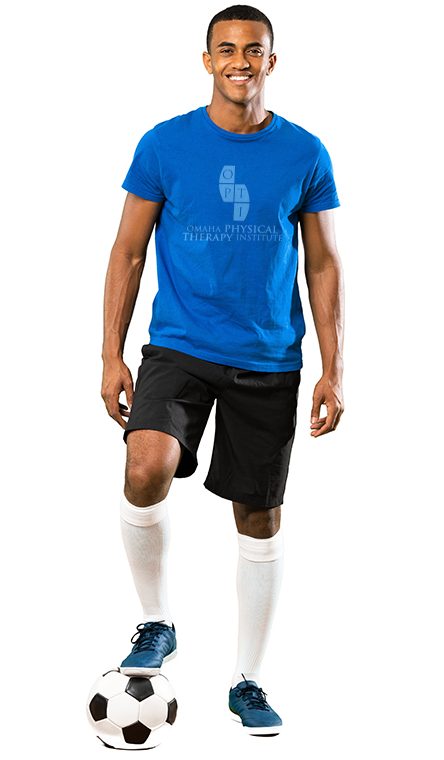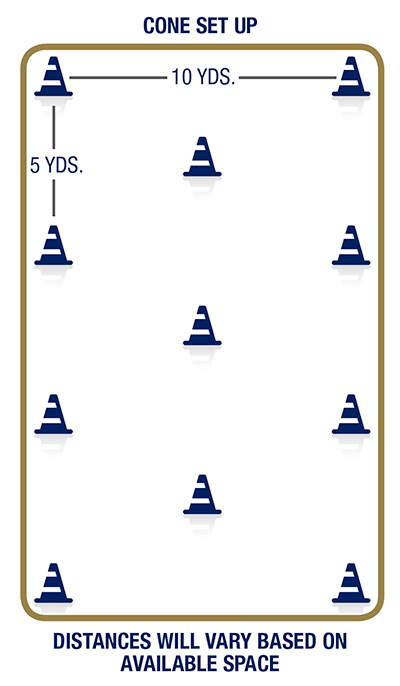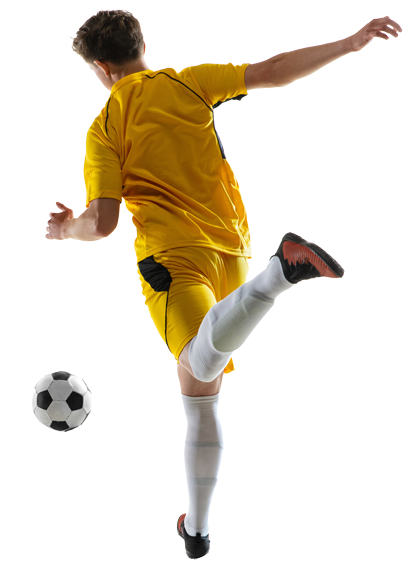
Coach Resources.
NeuroStrong Soccer-Specific Warm-up
The following exercises involved in the Omaha Physical Therapy Institute’s NeuroStrong warm-up protocol have been taken from science backed soccer-specific neuromuscular training programs that have proven to be effective in reducing the amount of injuries in soccer athletes as well as enhance performance. This warm-up has been condensed for efficiency, effectiveness, and compliance. It is a simple set up and only takes around 10-12 minutes to perform. It is recommended that this warm-up be performed before all training sessions and games. Shortened versions of it should be performed for re-entry/bench re-warm ups along with post-game/training cool downs. For maximal effectiveness, it is recommended that athletes engage in these exercises at least 2-3x/week and really focus on their form during the different movements. The longer the program is performed, the more neuromuscular control and kinesthetic awareness the athlete gains, creating a greater reduction in injury rates.

Soccer Specific Warm-up
Omaha Physical Therapy Institute’s NeuroStrong protocol
- Jogging Forward/Jogging Backward
- Side shuffling with Arm Swings
- High knees/Butt kicks
- Carioca
- Shuffle-kicks/ Jog back
- Running Hip out / Jog back
- Running Hip in / Jog back
- Shuffle cuts forward / Shuffle cuts backward
- Forward lunge with arms overhead / Jog back
- Side lunge-pivot-side lunge (Alternating legs) / Jog back
- Running to stop on one leg at each cone down and back (Alternate legs)
- Diagonal run with lunge-turn at cones (Alternate legs) / Jog back 2 Repetitions
- Scissor lunges forward / Jog back
- Skater hopping forward. Perform down AND back.
- Quick running forward 2 cones, back pedal backward 1 cone / Jog back 2 Repetitions
- Sprint forward / Defensive shuffling back 2 Repetitions
HOPPING (5 reps each leg- make sure to bend your knee when you land!)
- Single leg hopping forward/backward over line or cone 5 repetitions each leg
- Single leg hopping side-side over line or cone 5 repetitions each leg
- Shoulder to shoulder hops with a partner 5 repetitions each side
STRENGTH AND CONTROL
TREATMENT PEOPLE DESERVE
Read more about our treatment approach.

References:
1. J Sports Med Phys Fitness. 2018 May;58(5):659-663. doi: 10.23736/S0022-4707.17.07024-4. Epub 2017 Feb 21.
2. Clin Rehabil. 2017 May;31(5):651-659. doi: 10.1177/0269215516675906. Epub 2016 Nov 3.
3. Int J Environ Res Public Health. 2014 Nov 19;11(11):11986-2000. doi: 10.3390/ijerph111111986.
4. J Physiother. 2017 Oct;63(4):235-242. doi: 10.1016/j.jphys.2017.08.004. Epub 2017 Sep 20.
5. Am J Sports Med. 2015 Jun;43(6):1316-23. doi: 10.1177/0363546515574057. Epub 2015 Mar 20.
6. Scand J Med Sci Sports. 2019 Aug 8. doi: 10.1111/sms.13535. [Epub ahead of print]
17. Biol Sport. 2013 Dec;30(4):281-8. doi: 10.5604/20831862.1077554. Epub 2013 Nov 25.
8. J Sports Sci. 2016;34(6):549-56. doi: 10.1080/02640414.2015.1099715. Epub 2015 Oct 27.
9. Br J Sports Med. 2017 Apr;51(7):562-571. doi: 10.1136/bjsports-2016-097066. Epub 2017 Jan 13.
10. PLoS One. 2019 Aug 29;14(8):e0221346. doi: 10.1371/journal.pone.0221346. eCollection 2019.
